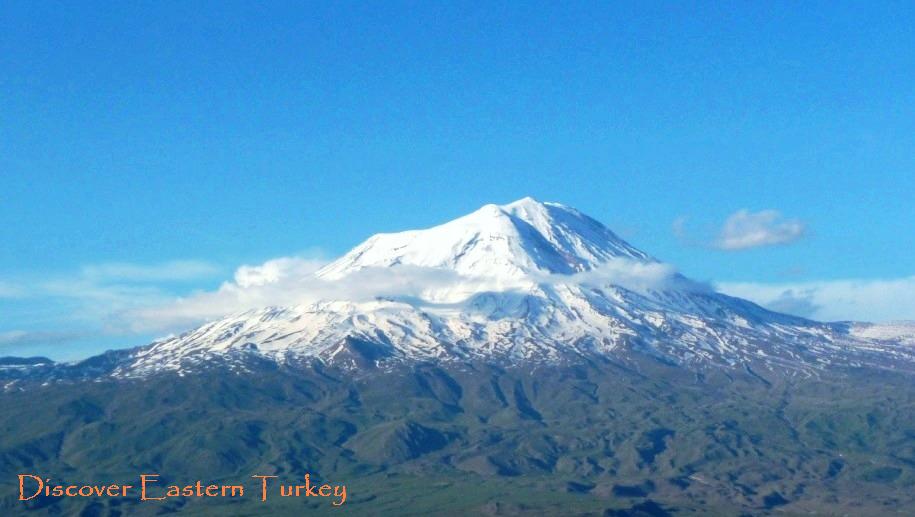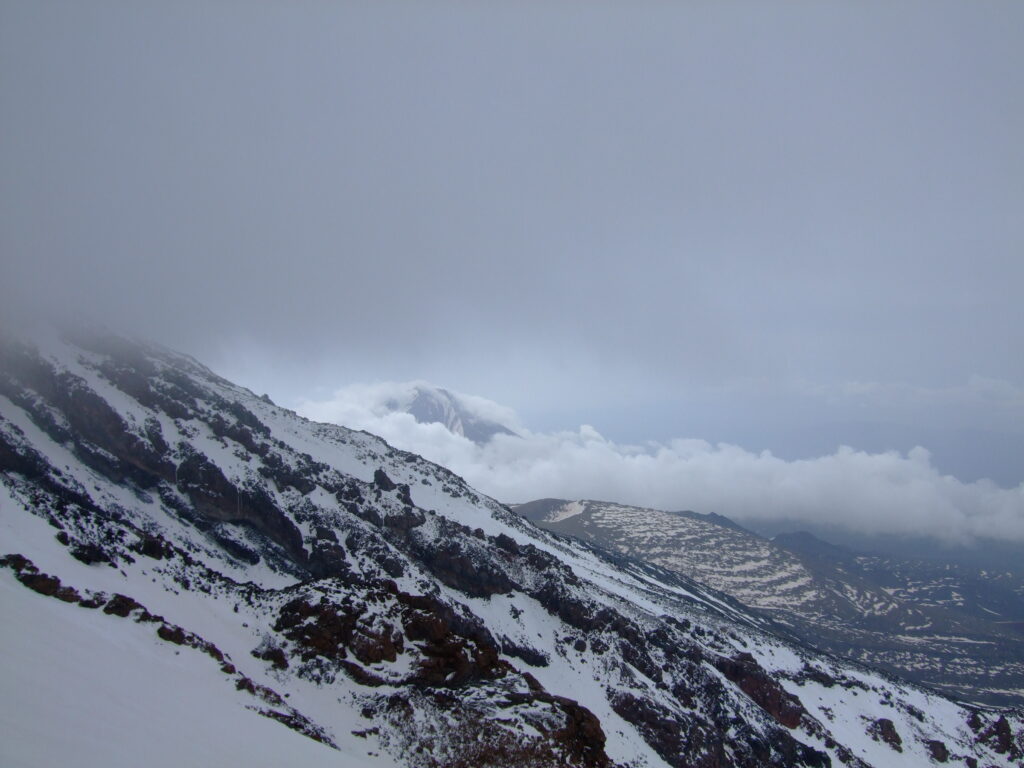Ararat is the highest peak in the Eastern Anatolian Highlands. It is 5,137 metres in elevation and rises 3,512 metres above Doğubeyazıt ; it is a Stratovolcano dominating the highland plain around it. It might seem odd to describe Ararat as “illusive” but that is exactly what it is.
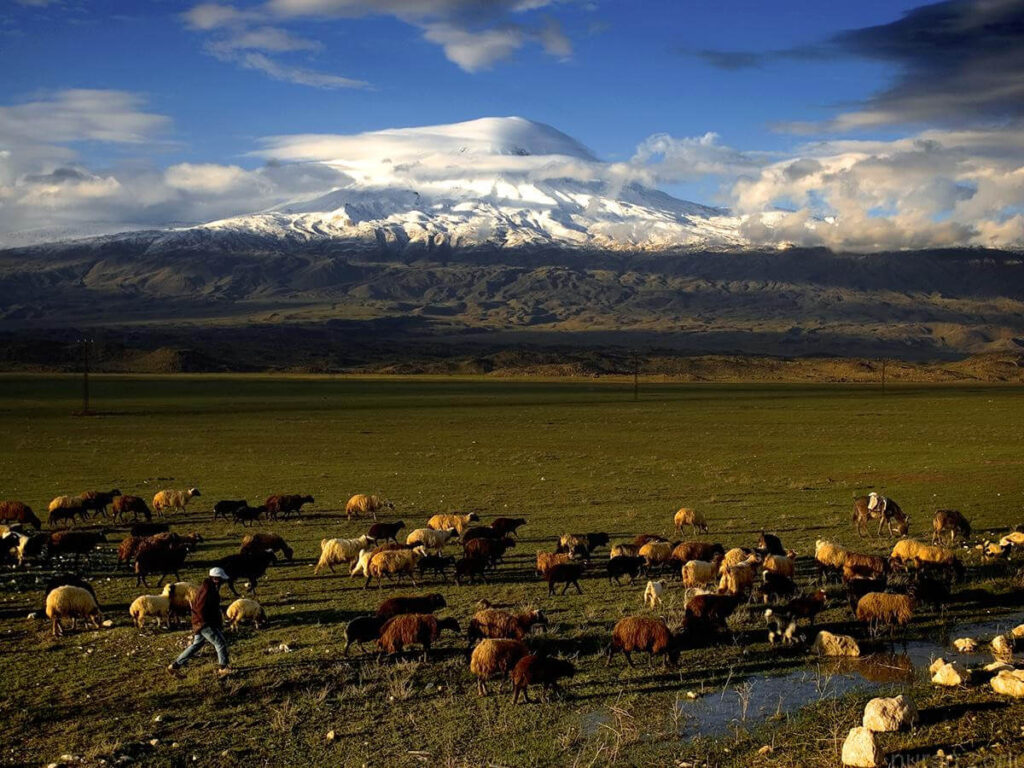
There are times when you can approach this great mountain, skirt around it and never actually see it…..until it opens up, as if by magic and in a stunning performance of natural theatre.
There are many adjectives that can be used to describe Ararat and her smaller companion, Lesser Ararat: Massive. Brooding. Aloof. Distant. Dominating. Mercurial. Haughty. Proud. Capricious. Illusive…….. and we will probably use them all, but there can be no surprise that Ararat has spawned many legends and countless stories.
Article continued below…
Our favourite story is about how Ararat and Lesser Ararat its smaller companion came to be; it is the story of two feuding sisters and is shared by all the ethnic groups that have congregated around the mountain and made their lives here in this hard and elemental landscape.
As the Turks say, “bir varmış bir yokmuş.” “Maybe there was and maybe there wasn’t”, a pair of argumentative sisters who lived on the Plain of Ağrı, where Ararat now stands. Well, I say argumentative but that’s a bit of an understatement. “Chalk and Cheese” doesn’t cover it. One sister was tall, elegant, graceful and beautiful. The other sister was short, clumsy and sported a permanently sour expression; certainly no beauty. What they did share however was a vexatious, bitter and vindictive personality, but only directed at each other. The problem was that they were together an awful lot because in a small village, how could it be otherwise?
Day after day the squabbles continued, they spilled out of the home and into the street, they filled the market place and they filled the shops. When young men came to court the beautiful sister, the little sister chased them away with insults. The little sister didn’t have any suitors because although she was not actually ugly she wore her anger on her face and let’s be honest, who is going to risk it? This made the little sister even angrier. The arguments got worse and worse, insults were exchanged, the air was thick with sarcasm and pointed remarks and they even came to blows.
Eventually the chaos caused by these two termagants drove their long suffering mother to distraction and she cursed her two warring daughters, saying to the beautiful daughter “I have had enough, may your head be permanently covered in ice and clouds, may you be fixed in one place, may you be mute and unable to respond to the people who come to you!” To the smaller daughter “May you for the rest of your days wear your anger on your face and for the rest of time be surrounded by snakes, wolves and scorpions and may men spurn you and may you be isolated and mute in your bitterness!”
Article continued below…

The next morning the village was quiet and the sisters were gone but there in front of the village was Greater and Lesser Ararat; Greater Ararat shrouded in mystery with a permanent ice cap, haughty, aloof and frequently obscured by cloud, while on her eastern flank was Lesser Ararat, frequently unnoticed, rocky, inhospitable, malevolent, infested with scorpions and snakes, inhabited by wolves and never visited. And that is how Ararat and her smaller companion came to be.
Article continued below…
With a record like that it is no surprise that for centuries nobody tried to climb Ararat. This reluctance was reinforced by the fact that Armenian Christians revered the mountain as the place where Noah’s Ark finally came to ground after the Great Flood, a story from Genesis familiar to all Christians around the world. But, unsurprisingly, there were legends that bolstered the sanctity of Ararat and the secret of Noah’s Ark.
According to one legend, St. Jacob tried many times to climb Mount Ararat to find the Ark which was buried under thick layers of ice. Possessed by a religious zeal he would set out to climb the mountain but each time, he would tire, fall into a deep slumber and wake up at the base of the mountain. After repeated failed attempts, one night God told him in a dream “Do not try to find the Ark. Leave it be. I will give you a piece of wood with which the Ark was made”. When he woke up, to his amazement he found the wood lying nearby, and he built a monastery on that place.
The Divine edict not to trespass on this holy ground has been kept in front of people’s minds by the mercurial potential buried beneath the stark mountains of the region; they almost seem to be alive. The brooding power trapped in the mountain manifested itself on July 2 1840 and pyroclastic flows from radial fissures on the upper north flank of the mountain and a significant earthquake caused severe damage and many casualties. Up to 10,000 people died in the earthquake, including 1,900 villagers in the village of Akhuri (modern Yenidoğan who were killed by a gigantic landslide and subsequent debris flow). The combined effects of earthquake, eruption, landslide and debris flow destroyed monasteries, churches, communities and even dammed a local river for a time.
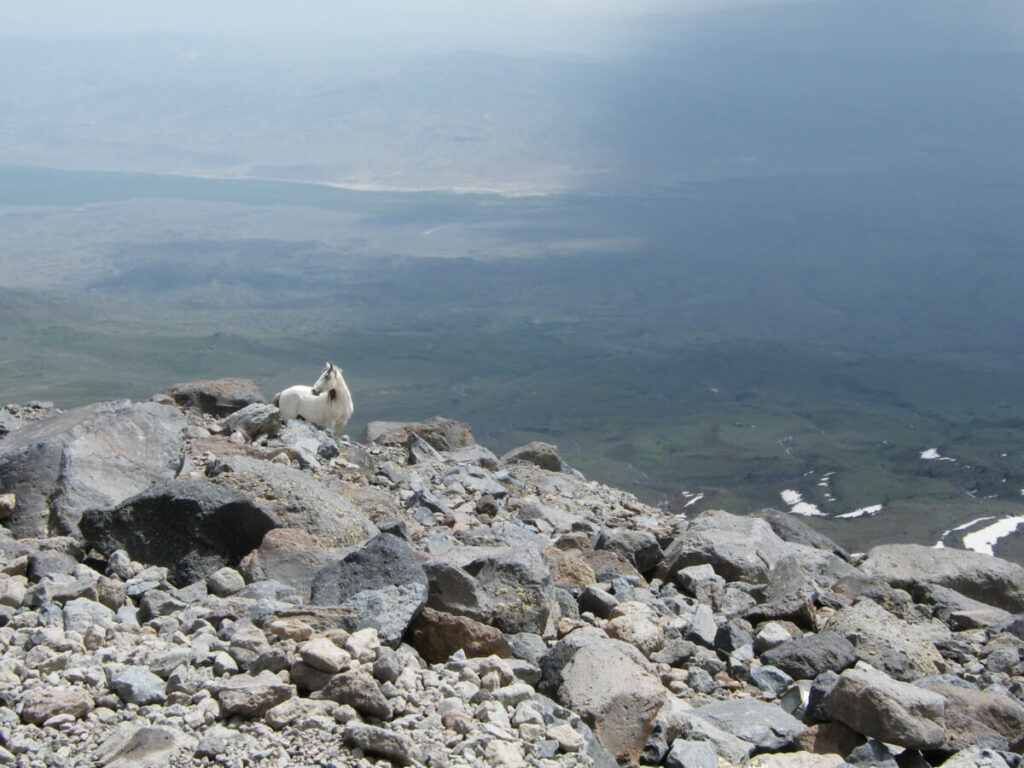
The volatile personality of the mountain is reflected in the local name. The Turks call it Ağrı Dag, or “Mountain of Pain” while to the Kurdish people it is Çiyayê Agirî, “Mountain of Fire.” To the Armenians it is Masis and the Persians it is Kūh-e Nūḥ, simply the Mountain of Noah which is what everybody knows it as today.
What with Devine wrath, elemental power, legends and two feuding sisters keeping people away, it took a westerner, Friedrich Parrot along with Khachatur Abovian and four others to break the spell with the first recorded ascent to the summit in 1829.
Since then, travellers, explorers, adventurers, sportsmen and mountaineers have come to test themselves or simply to see what’s there. Maybe the cataclysm of 1840 was the last throw of the tall, beautiful sister to hold back the march of time. Maybe…. but Ararat still has not quite lost her sting as we found out when we climbed the mountain.
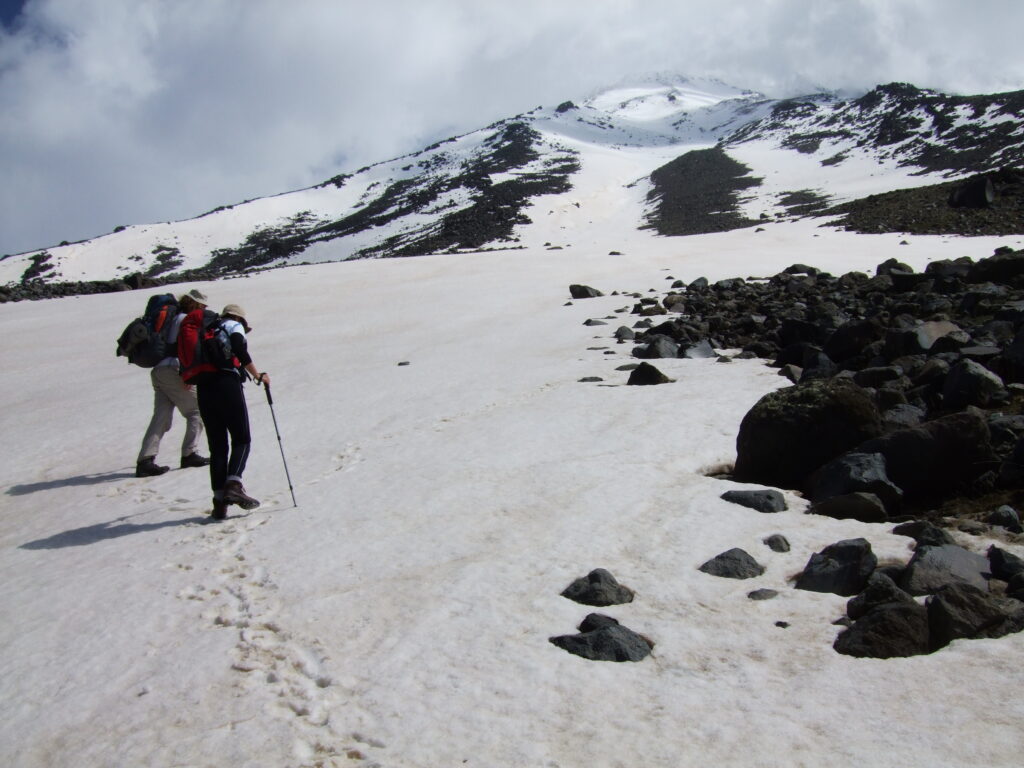
We started our ascent in beautiful clear weather, climbing steadily upwards through bolder strewn terrain …. and there’s an awful lot of “up” involved; this may be a strange thing to say about a mountain but it is absolutely true.
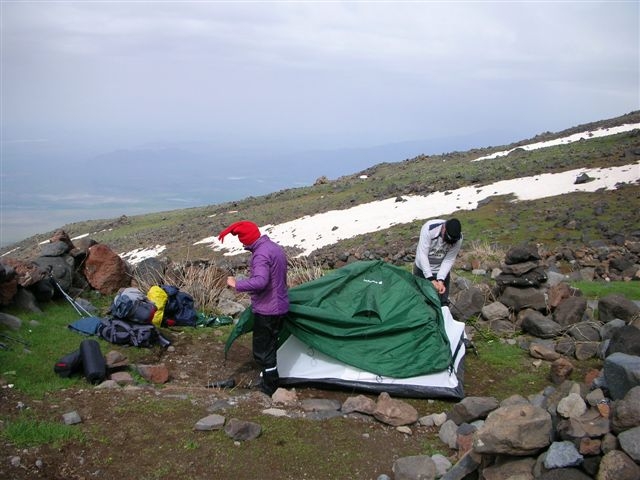
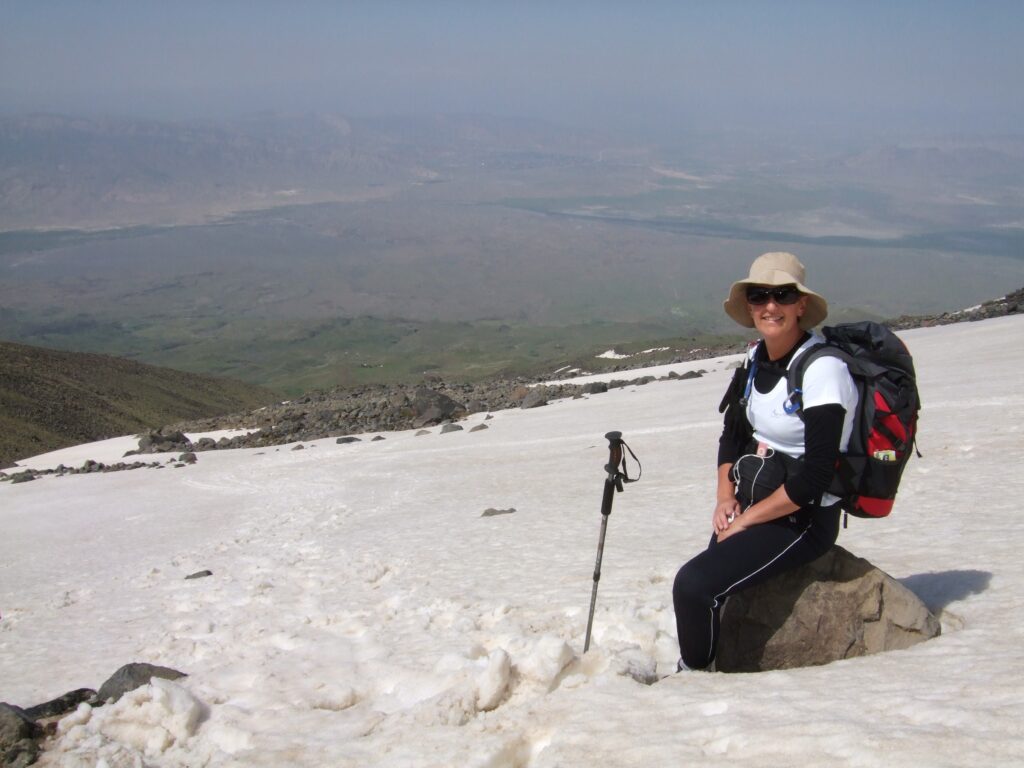
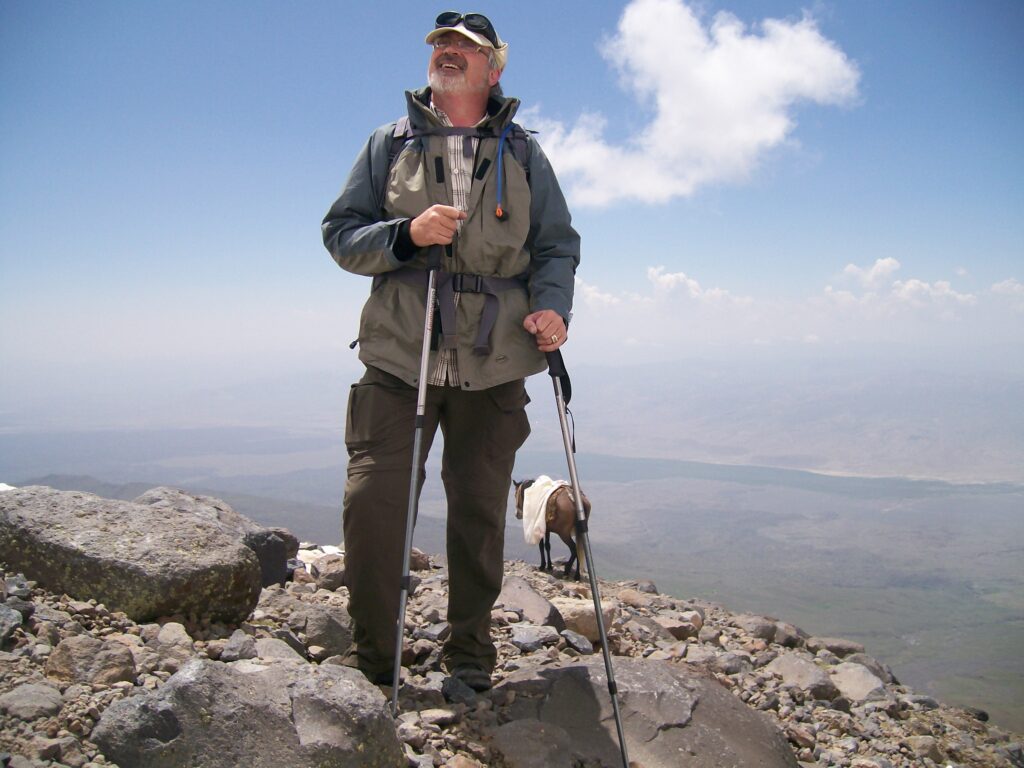
Our first camp offered splendid views to the south with Doğubeyazıt nestling at the bottom of the mountain and when the sun went down the stars came out leaving us with a strange impression of not being able to quite tell where the twinkling lights in the villages and the houses below became the stars in the sky. A feeling of being suspended in space.
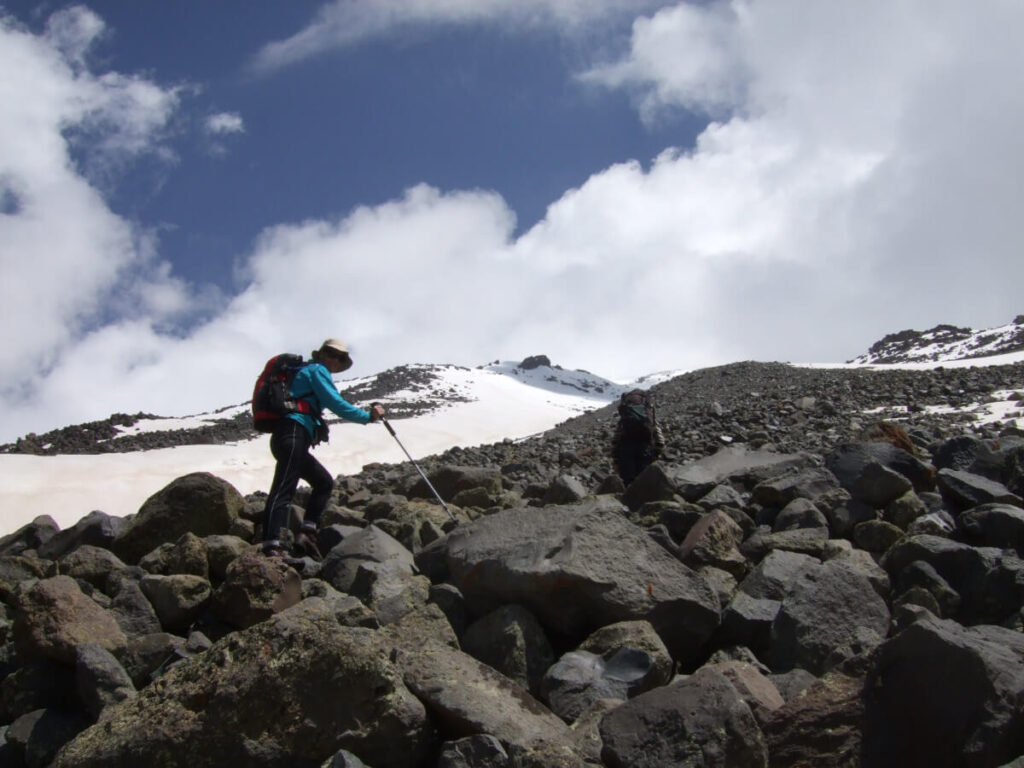
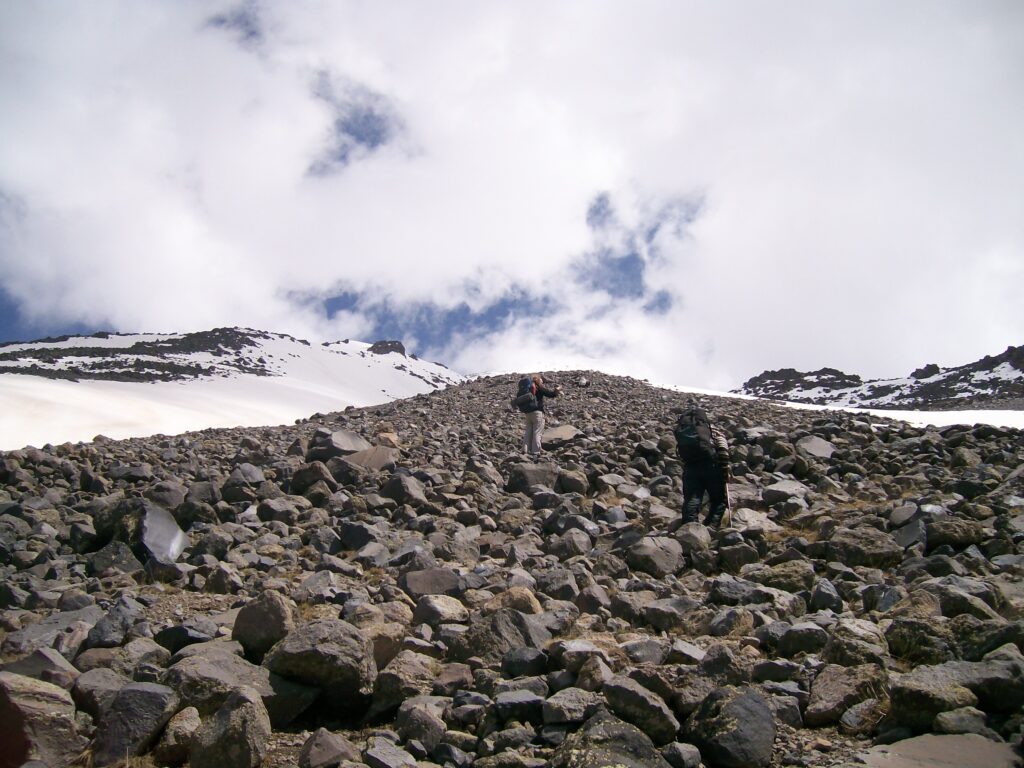
Ascending further the following day, now on packed snow, we got the sense that the mood of the mountain was changing. We pressed on to the next camp to prepare for the final ascent which started at one o’clock in the morning.
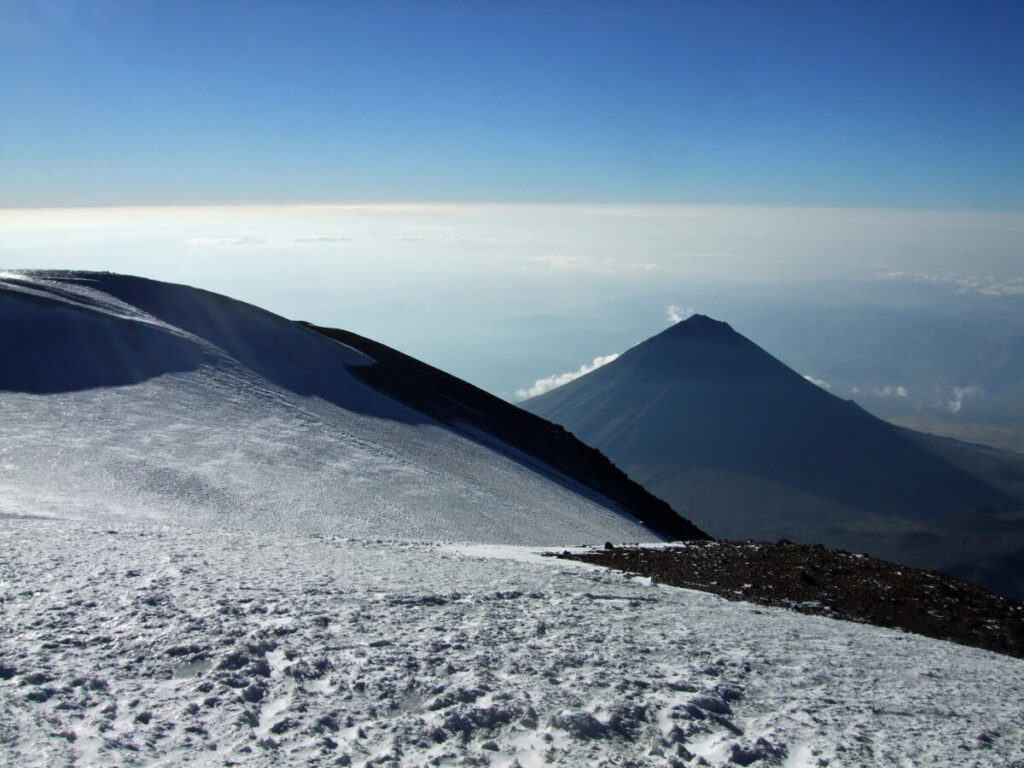
Leaving the camp in single file we could no longer see the stars because of the now heavy cloud cover and we proceeded upwards by the light of head torches reaching the saddle of the summit of the mountain just as the first light of the day was penetrating a break in the weather, giving us a glimpse of the route ahead and the clouds breaking around Little Ararat below us.
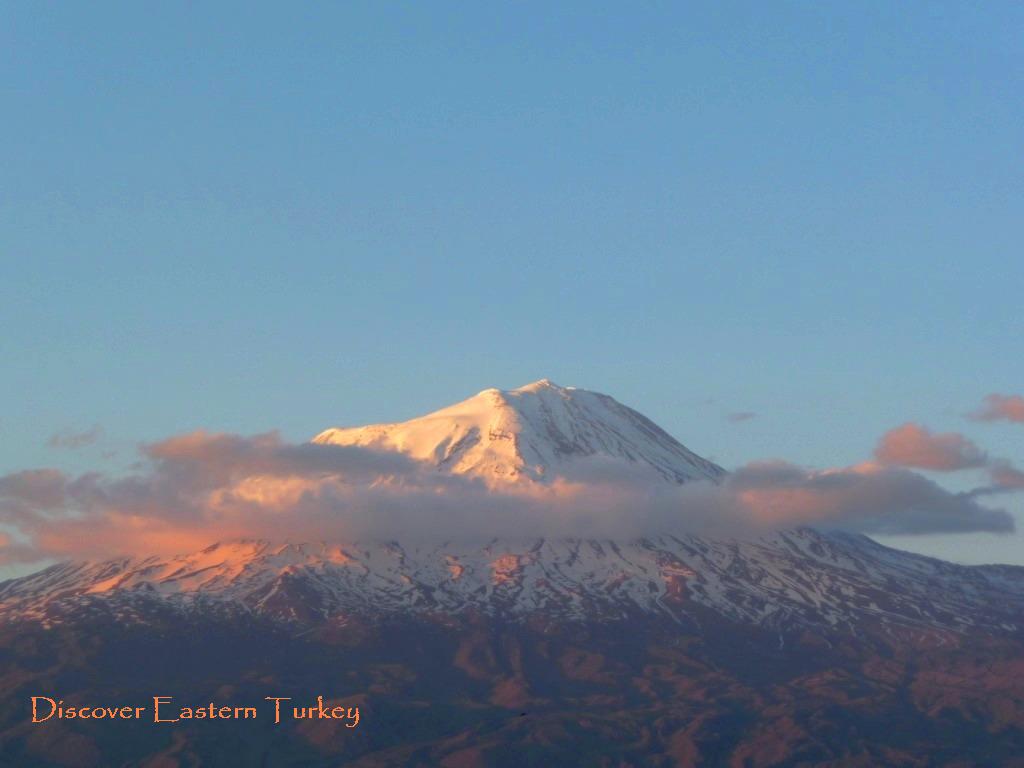
Arriving at the summit, we experienced the sting, as the weather turned completely and we had to rapidly make our descent for the safety of our camp on the flank of the mountain.
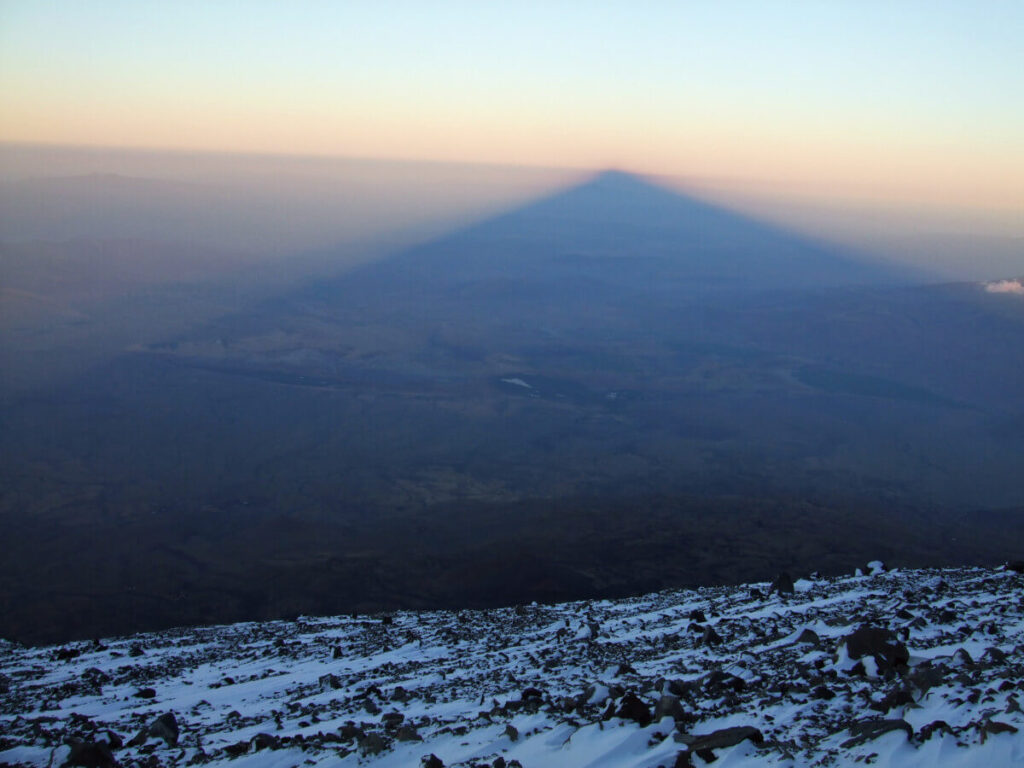
We spent the next eight hours being battered by gales, snow and sleet followed by dead quiet in the morning and a view of flattened tents with broken poles and tent canvas wrapped around their slumbering inhabitants.
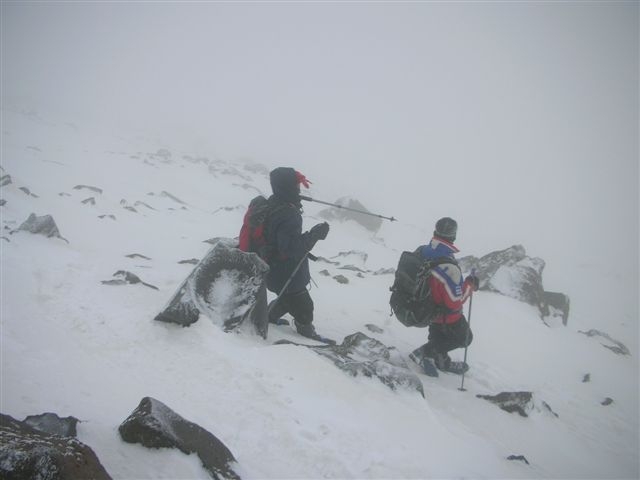
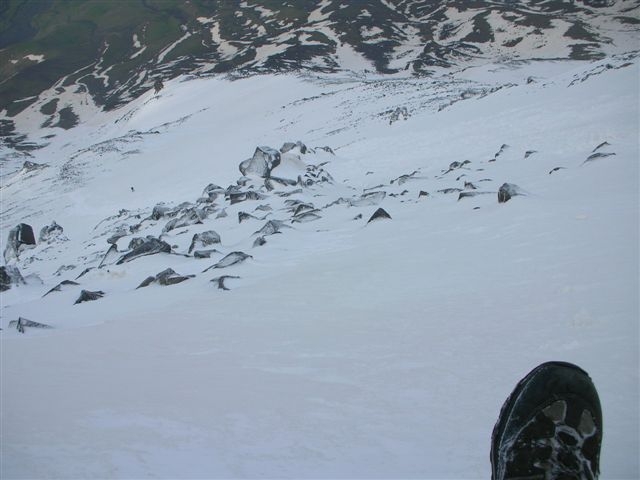
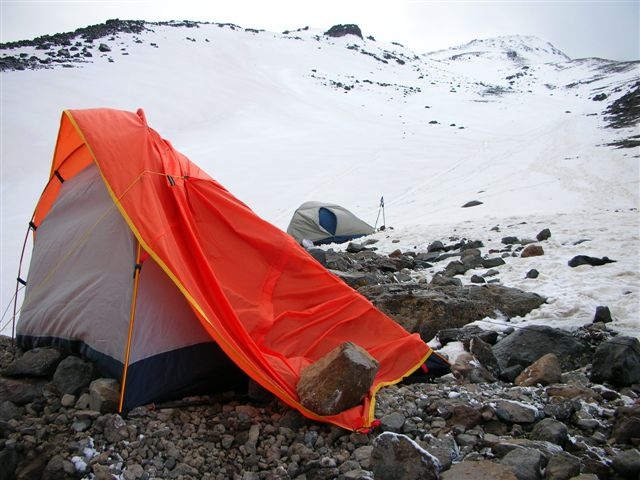
Some people are lucky to reach the summit in glorious sunshine; some people are unlucky and they don’t make it at all. There are no guarantees! We feel we were very lucky to reach the summit at that point where clear weather met elemental violence, the effect was stunning and the naked forces of Nature in full cry was unforgettable. We saw the mountain in full voice: angry, dangerous and yet still beautiful. She pursued us down the steep slope howling as we went.
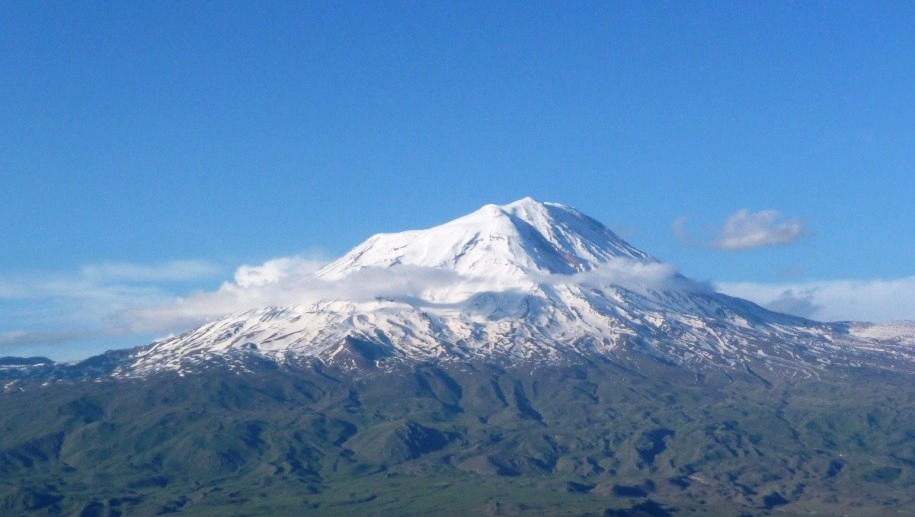
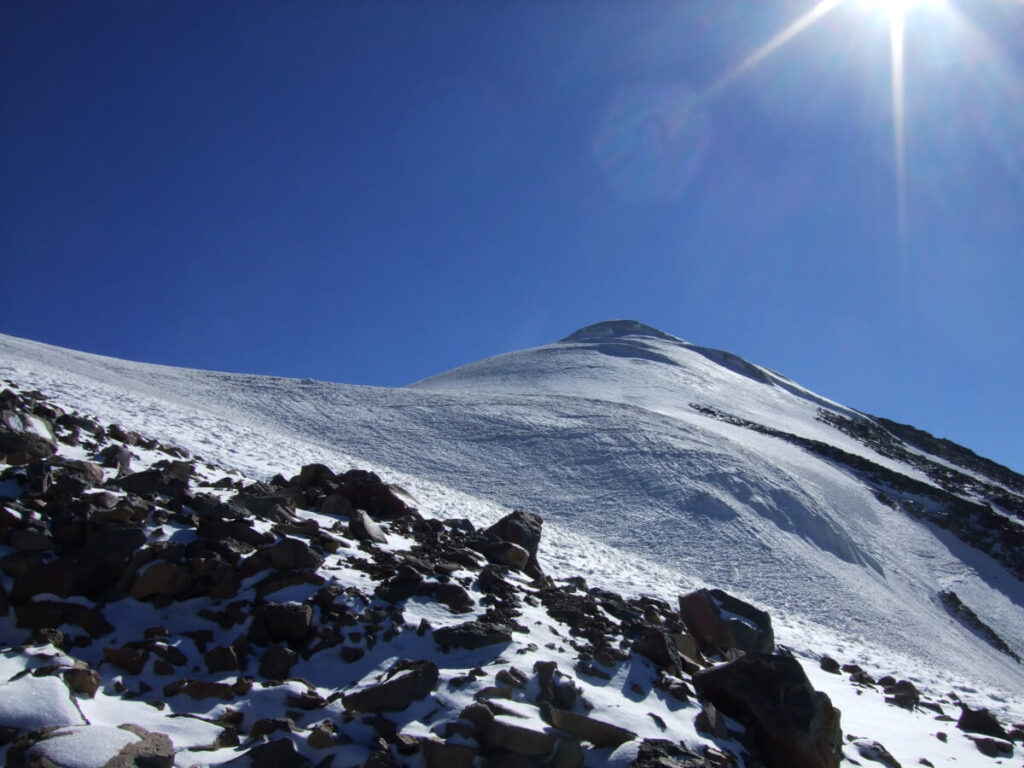
It has to be said that recollections of our climb are difficult to pin down because of the effort expended simply to put one foot in front of the other at ever increasing altitude where breathing becomes harder and harder, but flashes of indelible clear memories do stand out; huge black basaltic boulders littered around the slope that seem to retain the heat of the sun and radiate warmth in an environment that is white with snow up to our thighs, traversing a crystal blue glacier across the saddle of the summit glimpsed only for a short time because of the turn in the weather, the strange disembodied sense of being so high yet with our feet still on the ground but falling away from us on all sides.
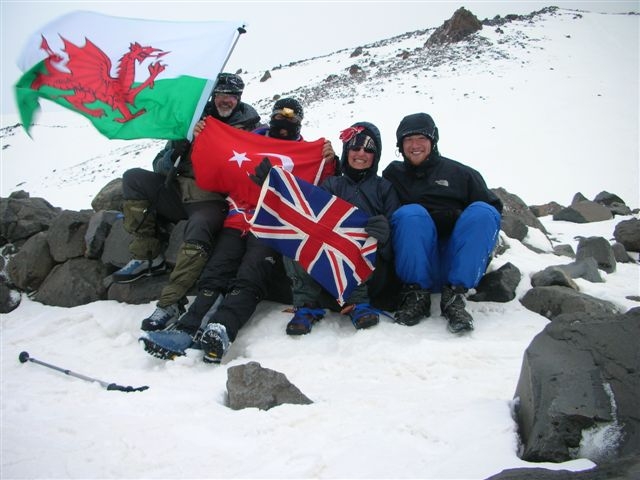
Because Ararat is not part of a mountain range and is a Stratovolcano standing proud and by itself in a plain, it is hugely impressive, but nothing beats the sight of Ararat from the top.
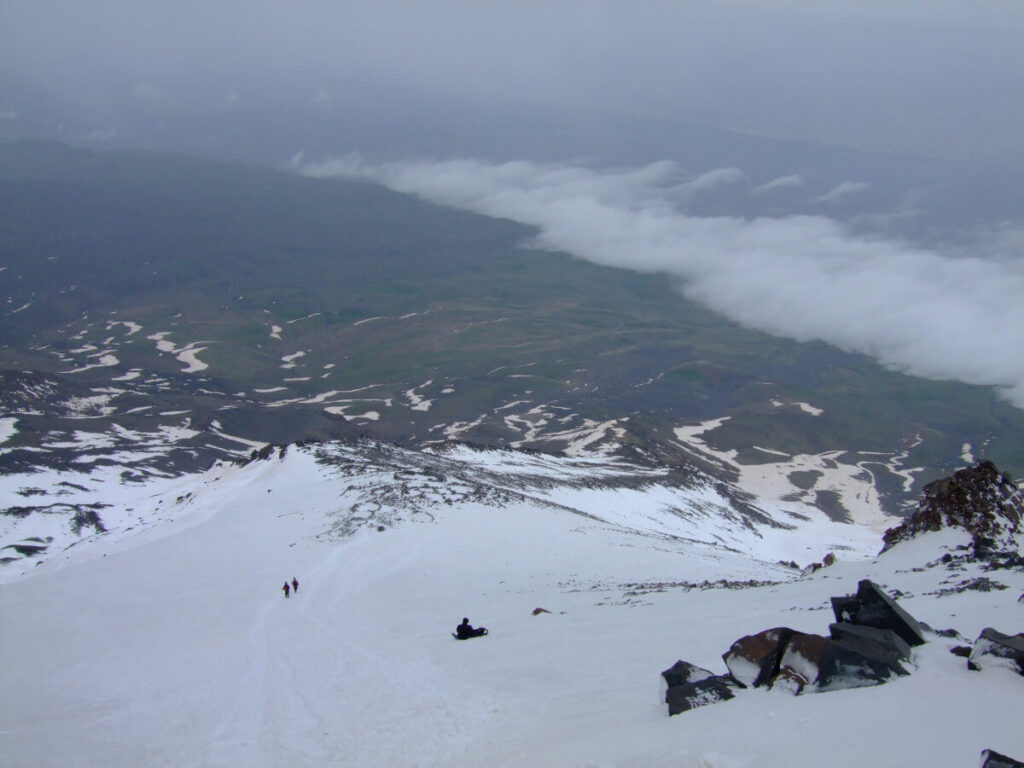
One tip, should you climb this beautiful sister: when you are on the top and depending which way you face you can see four countries. To the east, Armenia, to the south east Nakhichevan, an exclave of Azerbaijan and a little further to the south, Iran. Spinning around to encompass the rest of the view, is Turkey. When you switch on your mobile phone to call home or send a photo, you could log into the mobile network of Armenia, Azerbaijan, Iran or Turkey. Before you start your climb, check the rates of each country and you can choose the cheapest. Don’t get caught out with a funny phone bill when you get home.
